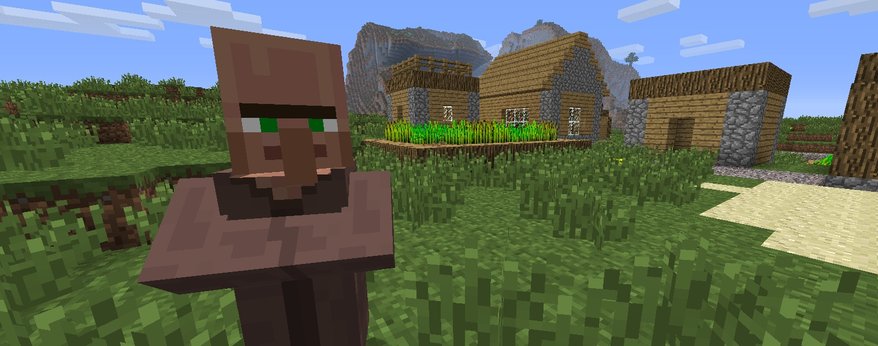
by Stone Marshall | Mar 18, 2015 | Minecraft News |
“Minecraft is enjoyed by many players in a wide variety of ways.”
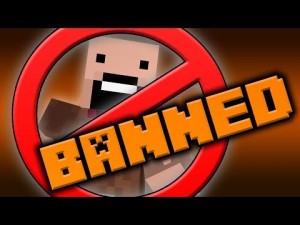 A spokesperson from Mojang responded to the possibility of Minecraft’s ban in Turkey over its alleged focus on “violence.”
A spokesperson from Mojang responded to the possibility of Minecraft’s ban in Turkey over its alleged focus on “violence.”
Speaking to GamesBeat, the Mojang representative explained the many different approaches to Minecraft by its fans, and the ways the game world’s dangers can be avoided or turned off entirely:
“Minecraft is enjoyed by many players in a wide variety of ways. Many enjoy the creative freedom that’s presented by Minecraft and its tools, some are more interested by the opportunity to explore a landscape without boundaries and to go on exciting adventures with friends. We encourage players to cooperate in order to succeed, whether they’re building, exploring, or adventuring.
“The world of Minecraft can be a dangerous place: it’s inhabited by scary, genderless monsters that come out at night. It might be necessary to defend against them to survive. If people find this level of fantasy conflict upsetting, we would encourage them to play in Creative Mode, or to enable the Peaceful setting. Both of these options will prevent monsters from appearing in the world.”
Turkey’s Ministry of Family and Social Policies are working on possibly banning Minecraft after its Children Services General Directorate investigated and found that while “the game can be seen as encouraging creativity in children” via building and crafting, “mobs [hostile creatures] must be killed” in the process.
“In short, the game is based on violence,” concluded the organization.
We’ll keep you updated on the results of this investigation.
Meanwhile, Minecraft is doing well in Japan, selling over 500,000 units on the PlayStation family of consoles.
Read original article here:
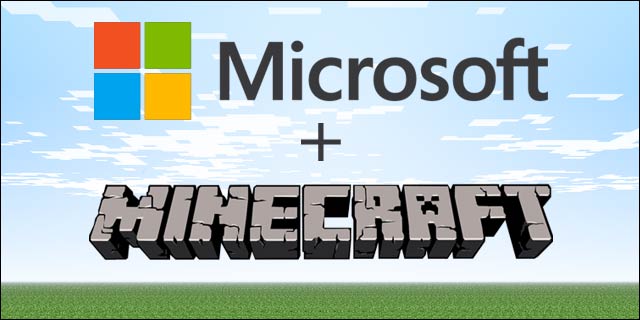
by Stone Marshall | Mar 17, 2015 | Minecraft News |
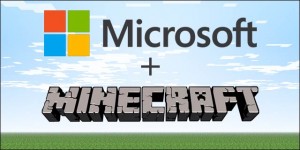 It’s official: Microsoft said Monday morning that it’s buying Mojang, maker of the popular “Minecraft” video game, for $2.5 billion.
It’s official: Microsoft said Monday morning that it’s buying Mojang, maker of the popular “Minecraft” video game, for $2.5 billion.
The Mojang team will join Microsoft Studios, maker of games such as the “Halo” and “Forza” franchises, according to a Microsoft news release.
“Microsoft’s investments in cloud and mobile technologies will enable ‘Minecraft’ players to benefit from richer and faster worlds, more powerful development tools, and more opportunities to connect across the ‘Minecraft’ community,” the company said in the news release.
Microsoft said it expects the acquisition, which is expected to close in 2014, to be break even in fiscal year 2015.
“Minecraft” has had more than 100 million downloads on PCs alone since its launch in 2009. It is the most popular online game on Xbox and the top paid app on the iOS and Android platforms in the U.S., Microsoft said.
“The ‘Minecraft’ community is among the most active and passionate in the industry, with more than 2 billion hours played on Xbox 360 alone in the past two years,” the company said in the news release. ” ‘Minecraft’ fans are loyal, with nearly 90 percent of paid customers on the PC having signed in within the past 12 months.”
Phil Spencer, head of Xbox and Microsoft Studios, said in a blog post Monday morning: “We respect the brand and independent spirit that has made ‘Minecraft’ great, and we’ll carry on the tradition of innovation to move the franchise forward. …
” ‘Minecraft’ adds diversity to our game portfolio and helps us reach new gamers across multiple platforms. Gaming is the top activity across devices and we see great potential to continue to grow the ‘Minecraft’ community and nurture the franchise. That is why we plan to continue to make ‘Minecraft’ available across platforms – including iOS, Android and PlayStation, in addition to Xbox and PC.”
Mojang is a small, independent game developer studio based in Stockholm, Sweden. Last year, the company made a profit of $128 million on $360 million in revenue, according to The Wall Street Journal, which first reported last week that Microsoft was considering the purchase.
“Change is scary, and this is a big change for all of us,” the Mojang team wrote in a blog post Monday morning, seeking to reassure the community of “Minecraft” players. “It’s going to be good though. Everything is going to be OK.”
Mojang agreed to be acquired, the game studio said in the blog post, because “Minecraft has grown from a simple game to a project of monumental significance. Though we’re massively proud of what Minecraft has become, it was never Notch’s intention for it to get this big.”
Markus Persson, known by gamers as “Notch,” is the creator of “Minecraft” and Mojang’s majority shareholder. According to the Mojang blog post, Notch decided:
“He doesn’t want the responsibility of owning a company of such global significance. Over the past few years he’s made attempts to work on smaller projects, but the pressure of owning ‘Minecraft’ became too much for him to handle. The only option was to sell Mojang. …
“There are only a handful of potential buyers with the resources to grow ‘Minecraft’ on a scale that it deserves. We’ve worked closely with Microsoft since 2012, and have been impressed by their continued dedication to our game and its development. We’re confident that ‘Minecraft’ will continue to grow in an awesome way.”
The company said it expects most of Mojang’s employees to remain there for the time being, though Mojang’s three founders — including Persson — are leaving.
This is Satya Nadella’s first major acquisition since becoming Microsoft CEO in February.
In a July memo, in which Nadella outlined his vision for the company, he said the company would focus on “digital work and life experiences that are reinvented for the mobile-first and cloud-first world.”
“The single biggest digital life category, measured in both time and money spent, in a mobile-first world is gaming,” he said in the memo.
Given Nadella’s vision, the “Minecraft” acquisition is important to Microsoft’s mobile strategy, IDC analyst Al Hilwa said in an email Monday morning.
Hilwa continued:
“Microsoft is a mobile ecosystem owner and has no choice but to keep building it if it is to maintain its relevance in the long term. … ‘Minecraft’ strengthens Microsoft’s hand in the battle with Google, Apple and Amazon. … ‘Minecraft’ is a solid business with intense user loyalty. That it can be purchased with overseas cash is also a part of the attraction, but its strategic value is that it is another brick fortifying Microsoft’s consumer services, a key lever in its mobile relevance. Gamers on other platforms will demand ‘Minecraft’ for some time to come…
“Successful and sticky games like ‘Minecraft’ are powerful strategic consumer services for their owners. Microsoft is wise to build up its services assets to make its mobile platform more compelling.”
Read original article here:

by Stone Marshall | Mar 16, 2015 | Minecraft News |
When you hear the words “tears of joy” you may think of a wedding, graduation, or some other emotion-laden event, but probably not an elementary school classroom and definitely not in the context of a school assignment. That was recently the case however in Chris Hanna’s fourth grade class in Goleta, California, where a student was overcome with emotion at the opportunity to use Minecraft for a class assignment on making a model of a California mission. One Minecraft mission project created by a student a few years ago has had over 22,000 views on YouTube. The California mission project has stepped into the 21st century!
But how does Minecraft connect with learning goals? Is it just the latest gaming fad or does it have real benefits for teaching and learning? If it does have benefits how might teachers and teacher education programs learn how to leverage it in spite of not fully knowing how it all works?
Still from Minecraft-San Diego Mission Project by Peter de Tagyos
First, a little background. Minecraft is akin to a digital sandbox where players “mine” to find desired resources, and “craft” to create and modify desired builds in a block-based environment. As the official Minecraft trailer (with over 110 million hits on YouTube) states, “with no rules to follow, the adventure is up to you.” My 11 year-old son seconds this notion by saying that he likes Minecraft because, “It can be anything you want it to be. There is no guidebook.” My 8 year old enjoys it because you “can make different things that you cannot make in real life.” Beyond that, Minecraft tends to be one of the leading causes of collaboration among my three sons as they talk, laugh and work together on various builds and adventures.
At this point you may be thinking “that is great that your kids (and millions of others) like the game, but what exactly does Minecraft afford for formal learning opportunities in schools and how does it connect to learning outcomes?” Perhaps you are also considering your own experiences with games in school like the classic Oregon Trail (death by dysentery anyone?) or others like Lemonade Stand, Where in the World is Carmen San Diego, Math Blaster, and the like that were supposed to transform teaching and learning, but have ended up like the floppy disk in the round file of digital history and wonder if Minecraft is just the latest “gaming fad” along those lines.
To explore these questions a bit more I reached out to three teachers with extensive experience using Minecraft in their schools. As a point of clarification, most schools are using MinecraftEdu which is an educational version of the enormously popular game.
Photo by Kevin Jarrett, Creative Commons License
James Pike, formerly a 3rd grade teacher at Ascension Catholic school in Los Angeles, used Minecraft with Math, Science, Computer Science, and English Language Arts. Students created models of cells starting with DNA, learned about area and perimeter and algebraic concepts and built “sets” related to the books and plays they are reading. Pike indicates that Minecraft changed the culture of his class. “Students were so engaged in learning, they would complain if they had to go to recess or DID NOT get homework. They were learning for their own reasons, not just to get a grade. When we took the final benchmark test of the year the class average was 84% in Math and 81% English Language Arts,” which was significantly greater than the school average.”
John Miller is a 7th grade History teacher at Chalone Peaks Middle School in King City, CA. He has spent extensive time with his students using Minecraft to support the development of literacy in his students, particularly English Language Learners, with learning experiences on Vikings, and the Tang Dynasty. Upcoming units will look at the Middle Ages, Crusade, and the Renaissance among other topics — all in a way that incorporates Minecraft and student developed creations. While they are “in Minecraft” students connect to other resources such as videos, websites, and documents that they interact with via reading and annotating. By the end of the year each of student “will have created a 40-50 page ‘historical novel.'”
As to the value of Minecraft, Miller sees it as “a 21st century version of experiential learning, or the learn by doing philosophy where students can experience a novel or develop and engineer an idea alone or collaboratively in an expansive virtual world with endless possibilities.” Because of these possibilities Miller has shifted his planning and pedagogy from being on the “front of the stage” to being a “designer behind the stage” working to “design lessons so that I get out of the way as quickly as possible” so that students can construct meaning through interactive approaches. That said his class use of Minecraft is not a free-for-all, but a highly structured and scaffolded exploration that has resulted in the most successful unit that he has taught in over twenty years of teaching.
Ancient Roman Bath House-Minecraft Tour, Moss Pike Harvard Westlake School
Moss Pike (no relation to Jim) had his Latin IA students at Harvard Westlake School in Los Angeles build their own versions of Roman structures with Minecraft. This was in order to understand how the Romans would have used them and to consider how public structures worked together. The project culminated in a digital tour of their structure shared on YouTube. Additional pictures and information are detailed on Pike’s blog. While some might wonder what does making a structure of a Roman bath have to do with learning a language like Latin, Pike argues that “project work and game-based opportunities of the sort provided by Minecraft are great ways for students to explore culture in active ways, especially if the projects have a social focus. By spending time on cultural fluency and people, we help our students to learn how to be more creative, collaborative, empathetic, etc., which in the long run is far more important than linguistic fluency on its own.” Based on the high levels of engagement and the quality of the work his students produced Pike believes it is just a matter of time for educators to “witness firsthand the power that game-based learning has within the classroom, I think we’ll see more experimentation with it. That’s not to say that everything will soon be game-based, but I think we’ll be able to find uses for it where we would have otherwise thought not possible or appropriate.”
Although these three teachers and others are highly favorable about Minecraft as a tool to engage students and give them opportunities to be collaborative and creative, there are others who think it is no more an educational fad and lacks alignment to standards. There are also concerns that Minecraft requires too much time for teachers to learn and takes too long to use in classroom settings. These concerns reflect many of the questions that K-12 education currently finds grappling with and exploring related to the role of teachers, the use of technology in teaching and learning, and issues of student engagement and achievement. These include questions like:
- Should teachers have a solid understanding of how to use educational technology tools or is it ok for students to know more than them, or for it to be a co-learning experience?
- To what extent should teachers work to connect to and leverage popular culture and tools that might be highly engaging to students as they plan lessons and learning experiences or should students conform to teachers notions of what is necessary?
- How might teachers make shifts in their identity from being content experts and disseminators of knowledge to becoming more of a designer, activator, and coach of learning?
- Should schools focus on achievement or work to find ways to get students excited about learning first with the hope that that will lead to academic growth?
- How do teachers curate the ever increasing plethora of technological tools and how might teacher education programs and school districts support that process?
In the end the debates about Minecraft reflect tensions over educational values. Different teachers value certain teaching and learning experiences, probably based on their educational and cultural backgrounds and personal abilities and proclivities. This in turn leads to the prioritizing of particular skills that they seek to develop in their students. Whatever the priorities may be, schools and teachers need to deeply reflect on the learning experiences they are providing for students in a world where content is no longer limited to what can be found within the walls of schools and where the risk of disengagement is increasingly a threat due to the competition from technological alternatives both academic and non-academic. While the jury is still out on game based learning, and Minecraft is but one option for schools to utilize, educators should strongly explore its potential to foster in the areas of engagement, problem solving, collaboration and communication, and creativity in support of larger learning goals across content areas. While these thinking practices and skills may not be on any standardized test, they are on the test of life for the world that our students are being “prepared” for. All the content we teach students will not matter if we do not prepare students to learn how to learn and to do so in a community of learners.
Read original article here:

by Stone Marshall | Mar 15, 2015 | Minecraft News |
All-in-one launcher soothes players’ Java installer pains

Oracle may be sticking with its plan to bundle unwanted software with its Java installer and updates, but Minecraft players soon shouldn’t have to worry about it, thanks to a new launcher for the popular Java-based game.
Minecraft maker Mojang – now a division of Microsoft – has been rolling out the new launcher over the past few months, albeit without much fanfare.
The game still runs on Java, as always. But rather than requiring players to download the Java Runtime from Oracle and install it themselves, the new launcher bundles a JRE with the executable – one that’s installed and maintained by Mojang itself.
That means Minecraft players soon won’t have to remember to uncheck the box that installs the Ask Toolbar or other superfluous crapware whenever they need to update their Java install.
What’s more, Mojang’s version of the JRE only installs the bits that are needed to run Minecraft. Notably, it doesn’t install the Java browser plugin, which has been the source of multiple critical security vulnerabilities in the past.
Sneaky software installs and security problems aren’t Mojang’s only reasons for bundling Java with Minecraft, though. According to a Reddit post by Minecraft developer “Dinnerbone,” taking charge of Minecraft players’ Java installs will help Mojang ensure that the game runs as well as possible on everybody’s systems.
“A really, really big percentage of our players use 32-bit java on 64-bit machines, and they don’t even know,” Dinnerbone wrote. “64-bit java runs significantly better in a lot of scenarios for Minecraft, so it’s just a waste that they do this.”
Most people don’t install the 64-bit JRE, Dinnerbone said, because it’s hard to find unless you know where to look. The 32-bit installer is the default.
What’s more, a lot of people can’t be bothered to keep up with successive Java updates, so their JRE installs become stagnant. Bundling Java with Minecraft can help keep players up to date. In particular, it means Mojang can start getting more Minecraft players onto Java 8, the current version, which Dinnerbone said includes lots of “pretty cool” features and optimizations that can improve game performance.
For now, the Minecraft launcher with bundled Java is only available for Windows, but Mojang says it plans to have a version for OS X ready for testing early this year.
Windows users can find the new launcher here. If you’re planning to install Minecraft for the first time and you’d like to manage your own JRE, though, you can find the older launcher by clicking the link on the download page that says “Show all platforms.” ®
Read original article here:
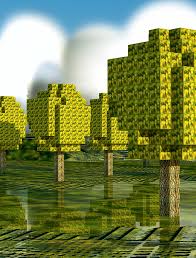
by Stone Marshall | Mar 13, 2015 | Minecraft News |
 Book publishing and physics don’t seem to have much in common at first glance. I’ve written several books, but the first time I achieved commercial success was because I had applied lessons learned in my work as an optical engineer at GE Global Research to the publishing process.
Book publishing and physics don’t seem to have much in common at first glance. I’ve written several books, but the first time I achieved commercial success was because I had applied lessons learned in my work as an optical engineer at GE Global Research to the publishing process.
My book series, GameKnight999, focuses on tackling cyber-bullying and is based on my eleven-year-old son’s favorite computer game, Minecraft.
Set Goals, Take Risks, Try Something Hard
When I embarked on this project, I hoped it would be a teaching opportunity for my son about setting goals, trying something hard, and taking a risk. I set a goal of not getting pessimistic about finding an agent until I had received 100 rejections. My son and I joke about how I crushed that goal – I received over 150 rejections before I stopped trying to get an agent.
Rather than quitting when I found that no agent would talk to me, I chose to self-publish my book. Initially I saw very poor sales, in fact depressingly poor sales, and realized that the challenge of publishing a book is more than having a good idea and being able to write well.
Where’s Waldo
I discovered I was missing the “secret formula” in the book publishing business, that is, how do you get noticed when there are 4 million books on Amazon. My book was like Waldo from the popular picture books, hidden among millions of look-alikes while striving to be noticed. I knew that if it could be found, my book would be successful: I chose to write a story about Minecraft and the audience was desperate for any fiction in this space. In fact, when I self-published my first book in 2013, there were only three other fiction books about Minecraft available on Amazon. Two of them were by young kids and only 20 pages long. While the third book did sell some copies, it was not marketed well to the target audience.
Before I wrote my book, I did market analysis and studied the demographics. I looked at other books in my market demographic (kids ages 7 – 13) and tried to identify what made the successful books really successful and what made the mediocre book really average, and then I extended these learnings to the book that I wanted to write. I treated this like a typical GE project and did my homework. As a result, when kids started to read my book, it seemed to resonate with them because it was similar to books that were already out in the marketplace. Once word of mouth started to get going, coupled with the marketing I was doing online, things exploded and the book reached No. 30 on Amazon’s top 100. As of the first week of February 2015, it had climbed to No. 9 on the New York Times Bestseller’s list for children’s series.
Marketing my book to its intended audience is not unlike the way researchers at GE Global Research have to differentiate themselves so that their skills will be in demand and they will always be able to get research funding. That means having a product that everyone will want that allows you to stand out among all the rest. Once that marketing is done within GRC, then it needs to be done within the GE businesses so that people who control funds will listen to you and take your calls.
Read original article here:










